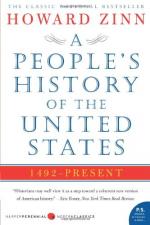
|
| Name: _________________________ | Period: ___________________ |
This test consists of 15 multiple choice questions and 5 short answer questions.
Multiple Choice Questions
1. In what year was the first representative assembly introduced in Jamestown in the form of the Virginia House of Burgesses?
(a) 1619
(b) 1625
(c) 1711
(d) 1600
2. When did the Antinomian Controversy take place?
(a) 1636-1638
(b) 1669-1672
(c) 1711-1713
(d) 1598-1610
3. When did the Stono Rebellion take place?
(a) 1776
(b) 1773
(c) 1659
(d) 1739
4. When did Great Britain impose the Stamp Act, requiring that many printed materials in the colonies be produced on stamped paper made in London?
(a) 1779
(b) 1745
(c) 1765
(d) 1750
5. Martin Van Buren served as U.S. President during what years?
(a) 1837-1841
(b) 1845-1849
(c) 1861-1865
(d) 1911-1915
6. The Second Seminole War began in 1835 and lasted until when?
(a) 1844
(b) 1842
(c) 1850
(d) 1846
7. When did James Polk serve as President of the United States?
(a) 1911-1915
(b) 1837-1841
(c) 1861-1865
(d) 1845-1849
8. The author states in Chapter 2, “It is roughly estimated that Africa lost” how many “human beings to death and slavery in those centuries we call the beginnings of modern Western civilization”?
(a) 6 million
(b) 50 million
(c) 20 million
(d) 3 million
9. The author notes in Chapter 4 that by 1760, there had been how many uprisings designed to create a coup to overthrown various branches of the colonial governments?
(a) 32
(b) 25
(c) 18
(d) 5
10. What percentage of profits was Christopher Columbus contracted to receive for the goods he brought back to the King and Queen of Spain during his voyage when he accidentally encountered the Americas?
(a) 10%
(b) 25%
(c) 40%
(d) 5%
11. By 1619, how many blacks had already been transported from Africa to the Caribbean and South America to work as slaves, according to the author in Chapter 2?
(a) 100,000
(b) 1 million
(c) 200,000
(d) 590
12. The First Seminole War began in 1814 and lasted until what year?
(a) 1825
(b) 1830
(c) 1901
(d) 1819
13. When did the Seven Years’ War begin?
(a) 1730
(b) 1756
(c) 1779
(d) 1801
14. When did the Flour Riot break out in New York City?
(a) 1788
(b) 1837
(c) 1912
(d) 1811
15. Where was James Polk born?
(a) Connecticut
(b) Massachusetts
(c) New Hampshire
(d) North Carolina
Short Answer Questions
1. What author spent a night in jail for refusing to pay his Massachusetts Poll Tax because he opposed the Mexican-American War?
2. On Columbus’s second voyage for the King and Queen of Spain, he was unable to locate gold so he instead filled his ships with how many slaves?
3. The ship headed for Jamestown that J. Saunders Redding writes about in Chapter 2 carried how many slaves?
4. When did the Mexican-American War take place?
5. What name refers to female workers who came to work for the textile corporations in Lowell, Massachusetts, during the Industrial Revolution in the United States?
|
This section contains 387 words (approx. 2 pages at 300 words per page) |

|




